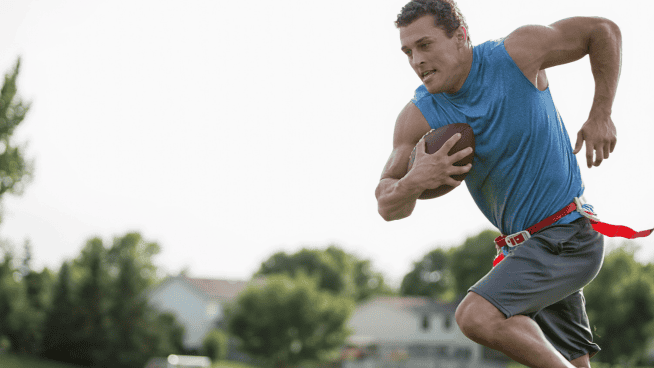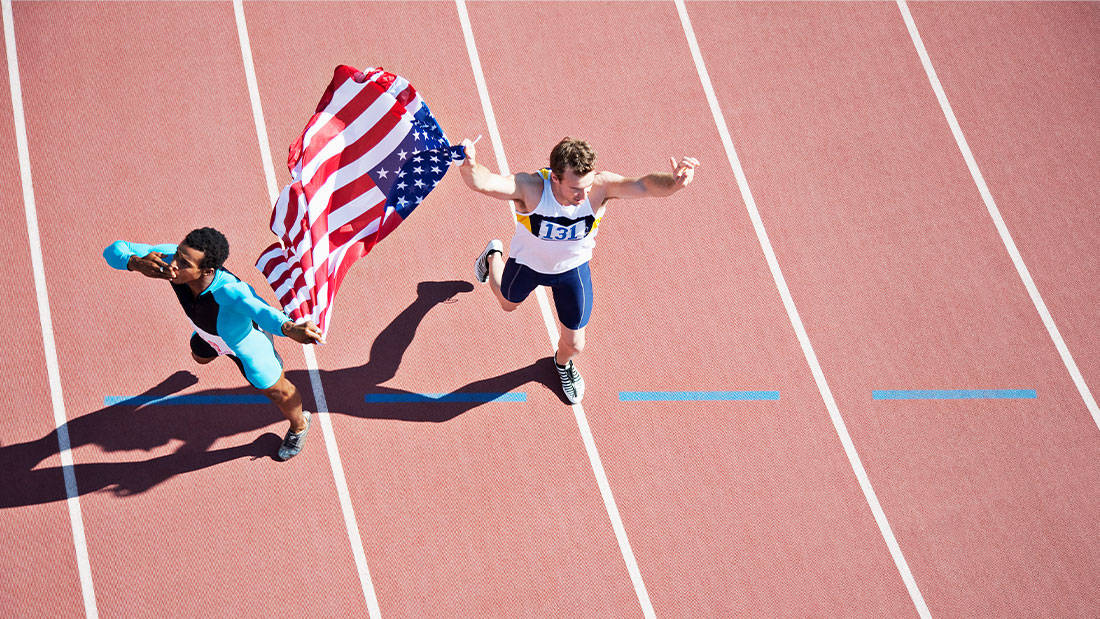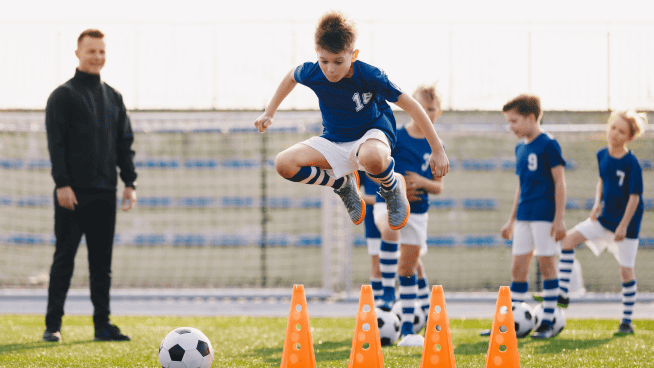Drills to Teach You How to Throw a Baseball Harder
How to throw a baseball is the first skill players learn. But it’s also where trouble starts. Surprisingly, what causes most game-time errors is not poor fielding—it’s poor throwing. (See Improve Throwing Velocity With These Five Exercises.)
Defenses are better at fielding the ball than throwing the ball. This is probably because throwing is considered such a fundamental skill that most coaches take it for granted, placing a greater emphasis on fielding and hitting. No one seems to pay attention about how to throw a baseball until a game is lost due to a throwing error.
To reduce throwing errors, coaches must do more than institute a throwing program with a series of drills. Accountability and accuracy must be made priorities.
Accountability. Players need to feel a sense of accountability whenever they make a throw in practice. This will remind them that every bad throw has consequences. For this to happen, players must make game-like throws in every situation in practice. Putting infielders on the clock during practice drills adds a sense of urgency. Demanding 100% in every situation dramatically increases players’ focus on their throws.
Accuracy. Consistency breeds accuracy. And the best way to promote consistency is by scheduling throwing drills in every practice. Coaches must commit to implementing them as often as they do hitting and fielding.
A baseball throwing program that demands accountability and accuracy is the biggest step a coach can take to reduce throwing errors. But any good program is made great with quality drills. Here are a few drills that would be excellent additions to your program.
Baseball Throwing Drills
Ready-Break-Throw
- Players start in a throwing position with their lead shoulder, hip and foot pointed toward the target.
- On coach’s command, players break their hands (separate them) and hold for one or two seconds for self-evaluation, ensuring they’re in the proper throwing position.
- On coach’s command, players throw to a specific point on the target, making sure to fully finish their throw.
- On the return throw, players step with their glove-side foot to meet the ball, jumping into the “ready” position.
Alternative: Have a teammate hold his/her glove in different locations to concentrate on accuracy. Changing the location is a good way to stay sharp.
Ready-Throw
- Same as ” Ready-Break-Throw,” except there is no pause.
- Players must still emphasize meeting the ball and getting into a proper throwing position.
- In a further stage, position players can simulate different aspects of their positions during the return throw; for example, middle infielders can work on their double play pivot, and corner infielders can work on their relay throw.
Quick Release
- This is the next step in the progression. It is great for improving a fielder’s footwork and hands as well as accuracy.
- Players make the transfer and return throw as quickly as possible while hitting the target.
- Make this a competition between different sets of throwing teammates.
Stretch it Out
This allows players to stretch out their arms while improving their arm strength.
- Players start at a normal throwing distance with a teammate.
- After every five throws, players back up a set distance, still keeping their throws on a line.
Repeat the Sequence
Once the players long toss, repeat the progression in reverse order, finishing with “Ready-Break-Throw.”
‘How to Throw a Baseball’ Practice
- Ready-Break-Throw – 10 throws at 30 feet
- Ready-Throw – 10 throws at 60 feet
- Quick Release – 10 throws at 90 feet
- Stretch it Out – 10-15 throws at 100 feet to max distance
- Quick Release – 5 throws at 90 feet
- Ready-Throw – 5 throws at 60 feet
- Ready-Break-Throw – 5 throws at 30 feet
READ MORE:
RECOMMENDED FOR YOU
MOST POPULAR
Drills to Teach You How to Throw a Baseball Harder
How to throw a baseball is the first skill players learn. But it’s also where trouble starts. Surprisingly, what causes most game-time errors is not poor fielding—it’s poor throwing. (See Improve Throwing Velocity With These Five Exercises.)
Defenses are better at fielding the ball than throwing the ball. This is probably because throwing is considered such a fundamental skill that most coaches take it for granted, placing a greater emphasis on fielding and hitting. No one seems to pay attention about how to throw a baseball until a game is lost due to a throwing error.
To reduce throwing errors, coaches must do more than institute a throwing program with a series of drills. Accountability and accuracy must be made priorities.
Accountability. Players need to feel a sense of accountability whenever they make a throw in practice. This will remind them that every bad throw has consequences. For this to happen, players must make game-like throws in every situation in practice. Putting infielders on the clock during practice drills adds a sense of urgency. Demanding 100% in every situation dramatically increases players’ focus on their throws.
Accuracy. Consistency breeds accuracy. And the best way to promote consistency is by scheduling throwing drills in every practice. Coaches must commit to implementing them as often as they do hitting and fielding.
A baseball throwing program that demands accountability and accuracy is the biggest step a coach can take to reduce throwing errors. But any good program is made great with quality drills. Here are a few drills that would be excellent additions to your program.
Baseball Throwing Drills
Ready-Break-Throw
- Players start in a throwing position with their lead shoulder, hip and foot pointed toward the target.
- On coach’s command, players break their hands (separate them) and hold for one or two seconds for self-evaluation, ensuring they’re in the proper throwing position.
- On coach’s command, players throw to a specific point on the target, making sure to fully finish their throw.
- On the return throw, players step with their glove-side foot to meet the ball, jumping into the “ready” position.
Alternative: Have a teammate hold his/her glove in different locations to concentrate on accuracy. Changing the location is a good way to stay sharp.
Ready-Throw
- Same as ” Ready-Break-Throw,” except there is no pause.
- Players must still emphasize meeting the ball and getting into a proper throwing position.
- In a further stage, position players can simulate different aspects of their positions during the return throw; for example, middle infielders can work on their double play pivot, and corner infielders can work on their relay throw.
Quick Release
- This is the next step in the progression. It is great for improving a fielder’s footwork and hands as well as accuracy.
- Players make the transfer and return throw as quickly as possible while hitting the target.
- Make this a competition between different sets of throwing teammates.
Stretch it Out
This allows players to stretch out their arms while improving their arm strength.
- Players start at a normal throwing distance with a teammate.
- After every five throws, players back up a set distance, still keeping their throws on a line.
Repeat the Sequence
Once the players long toss, repeat the progression in reverse order, finishing with “Ready-Break-Throw.”
‘How to Throw a Baseball’ Practice
- Ready-Break-Throw – 10 throws at 30 feet
- Ready-Throw – 10 throws at 60 feet
- Quick Release – 10 throws at 90 feet
- Stretch it Out – 10-15 throws at 100 feet to max distance
- Quick Release – 5 throws at 90 feet
- Ready-Throw – 5 throws at 60 feet
- Ready-Break-Throw – 5 throws at 30 feet
READ MORE:










